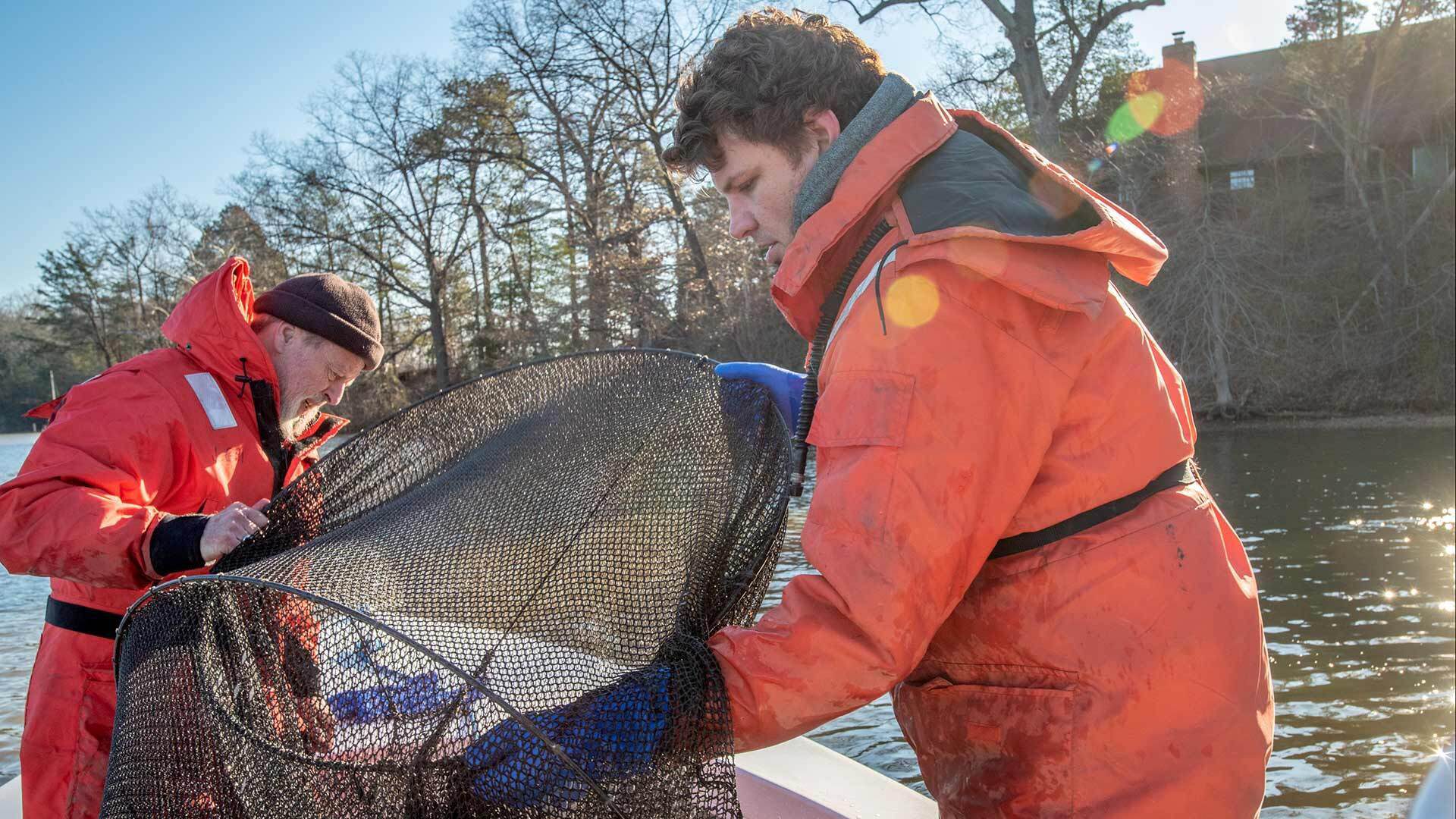- October 25, 2019
- By Samantha Watters
They’re known on the Chesapeake Bay as harbingers of spring because of their late-winter spawning runs, and their tasty flesh makes for an important commercial and recreational fishery. But yellow perch also serve as an overall indicator of the bay’s ecosystem health, and in that role, they have struggled for decades.
Now, with support from the Maryland Sea Grant program, Alexander MacLeod, a doctoral student in the Department of Environmental Science & Technology (ENST), is working to get to the bottom of the species’ problems. What affects perch now could hit other species later, he warned.
“Yellow perch aren’t crabs or oysters, or even the rockfish that garner so much attention in the bay, and yet the consistent environmental and reproductive challenges these populations have been facing for decades may be indicative of serious issues for those iconic bay fisheries in the future,” MacLeod said.
He’s leading a collaboration between the United States Geological Survey, the Maryland Department of Natural Resources and the United States Fish and Wildlife Service, expanding on previous research by the agencies.
His doctoral research is examining why yellow perch reproduction is in decline and egg hatch rates are as low as 10%. Initial studies by the state and federal agencies conducted from 2007 to 2009 examined effects of urbanization, like runoff from roads and parking lots, and found abnormalities in egg viability, ovaries and testes, particularly in urbanized watersheds.
MacLeod now hopes to identify what chemicals may be making it into the waterways that feed the bay and affecting yellow perch, working under ENST Associate Professor Lance Yonkos. To do so, he’s examining nearly the entire lifecycle of the fish, looking at egg viability, genetics in the brain, liver and ovaries, hormones in the blood and tissue changes to see if certain genes or hormones explain differences in reproductive health in weaker and stronger yellow perch populations across the bay.
Recreational fishing was closed from 1989–2009 in many rivers of the bay, primarily on the Western Shore, to try to revitalize the yellow perch population. While a five-year full closure of the rockfish fishery in 1985 produced a major recovery, there was no change to the yellow perch population when fishing was limited, so recreational fishing was reopened in 2010.
“This was a profound result that clearly showed there is something very wrong with the development of the eggs, and we didn’t know exactly what was going on there,” said Fred Pinkney of the U.S. Fish and Wildlife Service, one of MacLeod’s research collaborators.
As a predominantly freshwater fish, bay populations of yellow perch are one of the few that report “runs” similar to salmon. They live as adults in the saltier water closer to the bay, and then run up the rivers and tributaries to lay their eggs in a freshwater environment. Unlike other fish, their long strands or “ribbons” of eggs float in the water, making them an attraction to local communities, as well as an indicator that it is time to fish for yellow perch. This local ritual kicks off the fishing season for the spring. While unique and attractive, the floating yellow perch egg strands, which cling to woody debris, are extremely sensitive to environmental and water conditions.
MacLeod is looking forward to sharing his data with not only the scientific community, but with local communities that care about the health of their rivers and the bay, as well as yellow perch populations.
“People think about the health of the bay more than they think about the health of the rivers, but these are the arteries that keep it alive, so if you treat those poorly, it undermines overall bay health,” he said.
